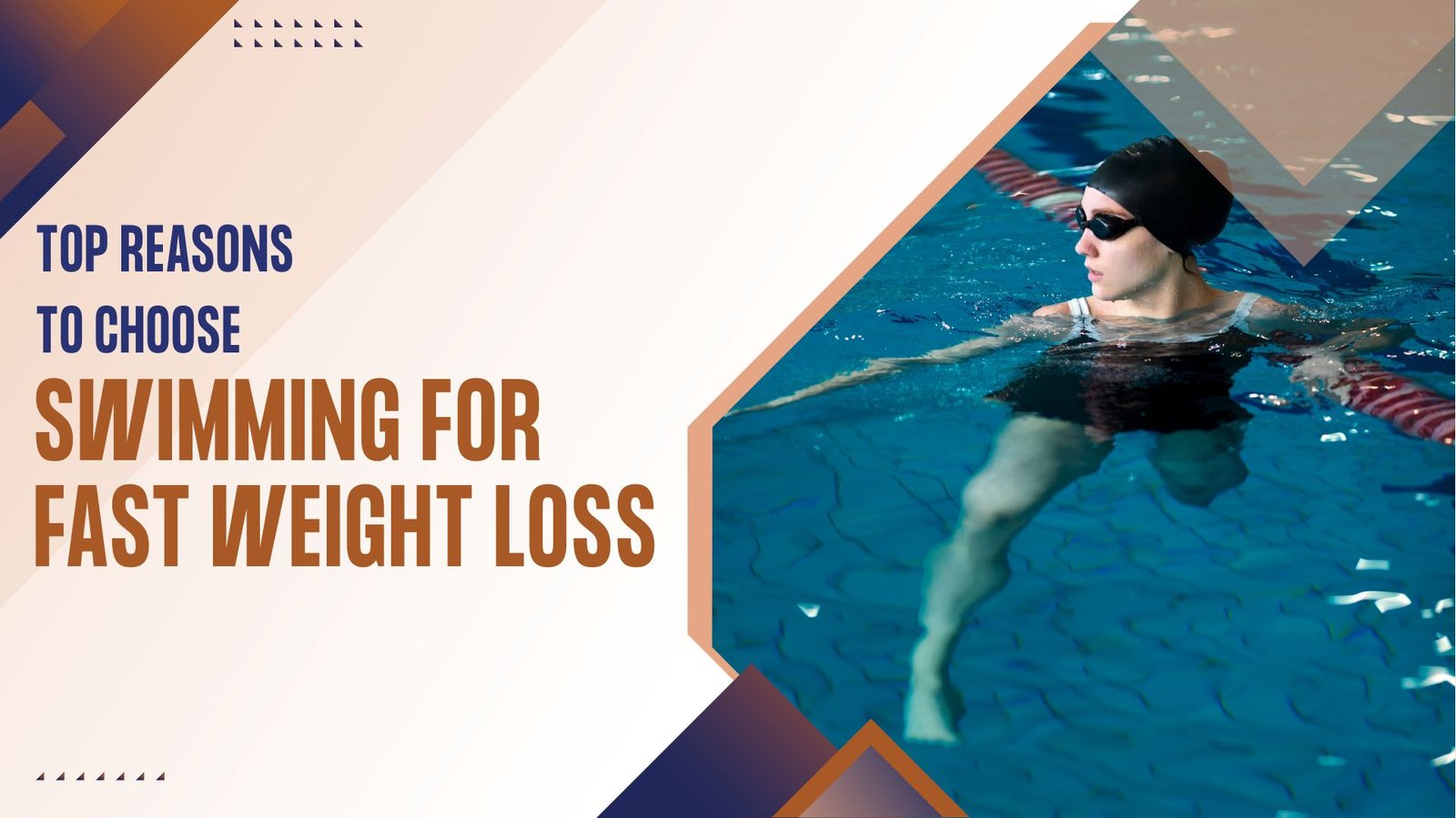Are you looking for a fun and effective way to shed those extra pounds? Swimming might be the answer you’ve been searching for.
It’s a full-body workout that burns calories, tones muscles, and feels more like play than exercise. But can swimming really help with weight loss, or is it just a relaxing hobby? Keep reading to discover how diving into the pool can transform your body and boost your fitness in ways you might not expect.
Your journey to a healthier, fitter you could start with just one swim.

Swimming And Calories Burned
Swimming is a full-body workout that burns many calories. It uses muscles from your arms, legs, and core.
Many people wonder if swimming can help with weight loss. The number of calories burned depends on the stroke and effort.
How Swimming Burns Fat
Swimming burns fat by raising your heart rate and using many muscles. This helps your body use stored fat for energy.
Swimming also builds muscle. More muscle means your body burns more calories even when resting.
- Water resistance makes muscles work harder
- Continuous movement increases calorie burn
- Swimming improves metabolism over time
Comparing Swimming To Other Exercises
Swimming burns calories similar to running and cycling. It is easier on joints because water supports your body.
Swimming can burn about 400 to 700 calories per hour. The exact number depends on your weight and swimming speed.
| Exercise | Calories Burned Per Hour |
|---|---|
| Swimming (moderate pace) | 400-500 |
| Running (6 mph) | 600-700 |
| Cycling (12-14 mph) | 500-600 |
| Walking (3.5 mph) | 250-300 |
Types Of Swimming For Weight Loss
Swimming is a great way to burn calories and lose weight. Different swimming styles can help you reach your goals in various ways.
Choosing the right type of swimming can improve your fat burning and endurance. Let’s explore some popular swimming styles for weight loss.
Freestyle And Fat Burning
Freestyle is the fastest swimming stroke. It helps burn many calories quickly. This stroke works your whole body and raises your heart rate.
Swimming freestyle for 30 minutes can burn around 300 to 400 calories. It mainly targets your arms, legs, and core muscles.
- Use long, smooth strokes for better fat burning
- Keep a steady pace to maintain your heart rate
- Breathe regularly to stay comfortable
Breaststroke And Endurance
Breaststroke is slower but great for building endurance. It uses strong leg and arm movements. This stroke helps you swim longer without getting tired.
Swimming breaststroke improves lung capacity and muscle strength. This makes it easier to swim for a longer time and burn more calories.
- Focus on smooth, controlled movements
- Keep your head above water to breathe easily
- Use a rhythm that keeps you swimming steadily
Interval Training In Water
Interval training mixes fast and slow swimming. It boosts your metabolism and helps burn more fat. You swim hard for short bursts and then rest.
This type of training improves both speed and endurance. It is very effective for weight loss because it keeps your body working hard.
- Swim fast for 30 seconds, then rest for 30 seconds
- Repeat for 10 to 20 minutes
- Try different strokes during intervals for variety
Benefits Beyond Weight Loss
Swimming is a popular exercise that helps people lose weight. It also offers many other health benefits. These benefits improve your body in different ways.
Swimming works your whole body. It helps your muscles, heart, and metabolism. Let’s look at some of these benefits.
Improving Muscle Tone
Swimming uses many muscles at the same time. It helps to build strength and shape your body. You will see your muscles become firmer and more defined.
Water gives resistance to your movements. This resistance helps muscles grow stronger without putting stress on joints.
Boosting Metabolism
Swimming increases your heart rate and breathing. This speeds up your metabolism. A faster metabolism helps your body burn calories even after swimming.
Regular swimming sessions can improve how your body uses energy. This helps with weight control and overall health.
Enhancing Cardiovascular Health
Swimming is a great exercise for your heart and lungs. It makes your heart stronger and improves blood flow. This lowers the risk of heart disease.
Swimming also helps lower blood pressure and reduces stress on your arteries. It keeps your cardiovascular system working well for a long time.
Tips For Effective Swimming Workouts
Swimming is a great way to lose weight and stay healthy. It works your whole body and burns many calories.
To get the best results, you need to plan your swimming workouts well. This guide gives tips to help you swim effectively.
Setting Realistic Goals
Start with clear and reachable goals. This helps you stay motivated and avoid frustration.
Set small targets like swimming 20 minutes or 500 meters at first. Increase your goals slowly over time.
- Decide how many days a week you will swim
- Choose a distance or time goal for each session
- Track your progress weekly to see improvements
Combining Swimming With Diet
Swimming burns calories, but a good diet helps you lose weight faster. Eat healthy foods to fuel your workouts.
Focus on eating fruits, vegetables, lean proteins, and whole grains. Avoid sugary and fatty foods that add extra calories.
- Drink plenty of water before and after swimming
- Eat a light snack if you swim for more than an hour
- Keep your meals balanced and portion sizes moderate
Tracking Progress In The Pool
Keep a record of your swimming workouts. Tracking helps you see how far you have come and what to improve.
Write down the time, distance, and type of swim for each session. Note how you feel during and after swimming.
- Use a swim watch or app to measure distance and time
- Record your stroke count or laps completed
- Note any changes in energy and endurance
Common Challenges And Solutions
Swimming is a great way to help with weight loss. It works many muscles and burns calories. Still, some people face problems that stop them from swimming regularly.
Here we talk about common challenges and how to fix them. This can help you swim more and lose weight safely.
Overcoming Swimming Fatigue
Swimming can make you feel very tired, especially if you are new. Fatigue can stop you from exercising often. It is important to build your stamina slowly.
Start with short swims and take breaks. Drink water to stay hydrated. Rest well after swimming to help your muscles recover.
- Swim for 10-15 minutes at first
- Take breaks between laps
- Drink water before and after swimming
- Rest at least one day between swim sessions
Dealing With Pool Accessibility
Not everyone has a pool nearby. This can make swimming hard to do regularly. Finding a pool that fits your schedule is key to keep swimming.
Check local community centers or gyms. Some pools offer low-cost or free swim times. Try to pick a pool close to home or work.
- Look for public pools in your area
- Ask about swim hours and costs
- Choose pools with flexible schedules
- Consider pools at schools or clubs
Preventing Injuries
Swimming is low impact but injuries can happen. Shoulder pain and muscle strains are common problems. Warming up and using good technique can help.
Stretch before swimming. Swim at a steady pace. Avoid pushing too hard too soon. If you feel pain, stop and rest.
- Warm up with light stretching
- Use proper swimming form
- Increase swim time and speed slowly
- Stop if you feel sharp pain


Frequently Asked Questions
Can Swimming Effectively Burn Belly Fat?
Swimming burns calories and reduces overall body fat, including belly fat. It combines cardio and resistance, boosting metabolism and fat loss.
How Many Calories Does Swimming Burn Per Hour?
Swimming burns 400-700 calories per hour, depending on intensity and stroke. It’s an efficient exercise for weight loss and fitness.
Is Swimming Better Than Running For Weight Loss?
Swimming is low-impact and full-body, ideal for joint health. Running may burn more calories but can stress joints, unlike swimming.
How Often Should I Swim To Lose Weight?
Swimming 3-5 times weekly, 30-60 minutes per session, supports steady weight loss. Consistency and intensity matter more than frequency alone.
Conclusion
Swimming offers a fun way to lose weight. It’s effective and low-impact. The water supports your body, reducing strain on joints. You burn calories while enjoying the pool. Consistency is key for results. Combine swimming with a balanced diet for the best outcomes.
Set realistic goals and track your progress. Find a routine that fits your lifestyle. Enjoy the journey to a healthier you. Swimming not only helps with weight loss but also boosts mood. Dive in and make a splash towards your fitness goals!



